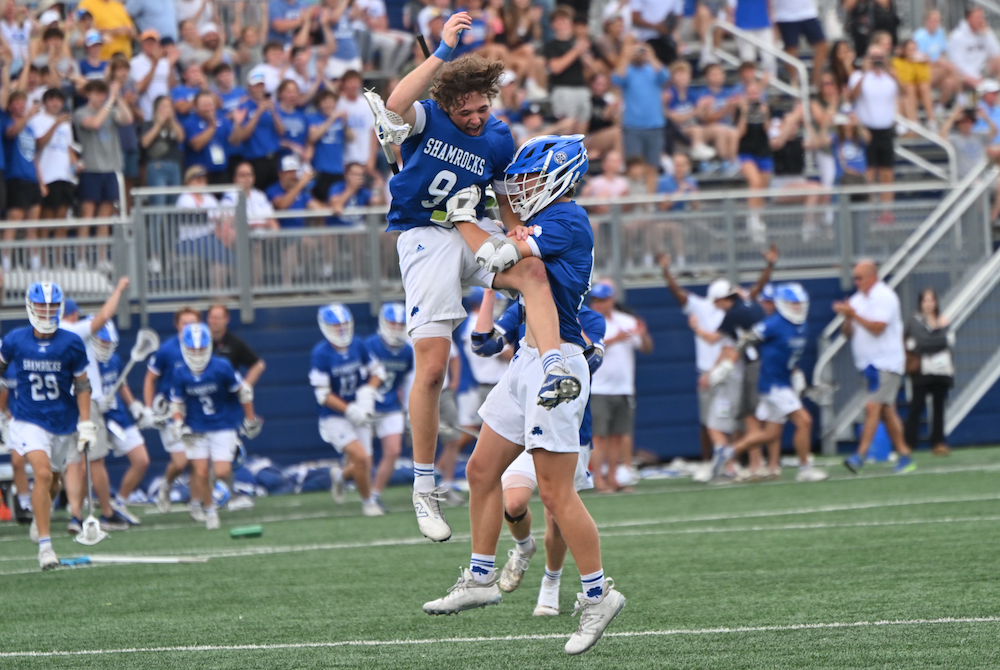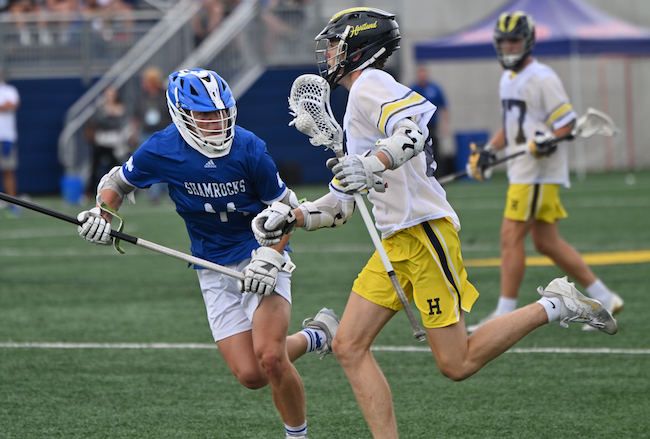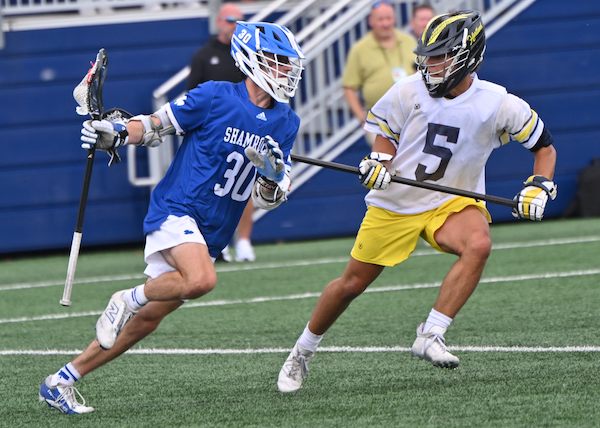
Keep on Coaching
February 1, 2013
By Geoff Kimmerly
Second Half editor
A few weeks ago, I finally got my first chance this season to watch a friend coach his basketball team. After guiding some others at the lower levels, this is his first time running the varsity – something he wasn't sure he wanted to do with a 1-year-old just learning to walk, but a challenge he ended up taking on to the benefit of all those involved.
Simply put, he’s good. I've seen a lot of teams and a lot of coaches over the past 15 years, and although I wouldn't know much of what to do if I were walking the sideline, I felt pretty qualified in telling him I was impressed – even if he didn't buy that I was offering an unbiased opinion. The best news is he’s gone from not sure about this a few months ago to talking about next season.
We know, at least anecdotally, that coaching continues to get more challenging. The time commitment has grown substantially to make running a program a year-round endeavor in a lot of sports at a lot of schools.
That commitment – especially for coaches with children of their own – was a main reason referred to in a New Haven Post-Chronicle story Saturday that noted 23 football coaching openings in Connecticut at one point this offseason. That state has 146 football teams – meaning roughly 15 percent will have new leaders this fall.
And that got me thinking about my friend, about how glad I am he’s given this a shot, and how I've seen so many others either not do so, or not stick around long despite having some pretty nice success.
A study published last winter in Interscholastic Athletic Administration magazine – a product of the National Interscholastic Athletic Administrators Association – noted some predictable results of a study that sought to determine the biggest challenges faced by first-year high school coaches.
The toughest according to the study was balancing the demands of coaching and teaching, experienced by nearly half the respondents – 98 percent of which coached high school teams and 81 percent of which are teachers.
The next six reasons all were noted by at least 30 percent of those in the study – personal fatigue, securing community support, securing and caring for facilities and equipment, parental contact, keeping non-starting players motivated, dealing with schedule interruptions and motivating athletes to achieve consistent, peak performance.
Nothing there is earth-shaking, and most if not all of these challenges are faced by high school coaches regardless of how long they've been in the field. But I got a little more perspective from some of the 32 items that ranked as least challenging to the first-year leaders – keeping in compliance with state and league regulations, dealing with substance abuse issues, teaching sport skills and creating a positive team atmosphere – things that seem most important, and yet appear to be easiest to do. I’m not sure what that tells us – but I think it tells us something.
Click to check out the entire three-page breakdown of the study, plus the researchers’ recommendations to remedy some of what first-year coaches face.
Giving back to Saginaw
I love reading about high-level athletes – like a star-studded group of alums from Saginaw – giving back to where they got their starts.
Pittsburgh Steelers star LaMarr Woodley made a big impact before the start of this school year by donating $60,000 to cover all participation fees for athletes in his former school district. The Saginaw News’ Hugh Bernreuter writes today about how Woodley (Saginaw High), the Philadelphia 76ers’ Jason Richardson (Saginaw Arthur Hill) and former Oakland Raiders standout Stu Schweigert (Saginaw Heritage) have combined to give more than $865,000 back to their home communities.
Bernreuter also mentions the non-monetary contributions of the Golden State Warriors’ Draymond Green (Saginaw High) and former Indianapolis Colts receiver Blair White (Saginaw Nouvel).
Click to read more about it.
Quote(s) of the Week
While rifling through more papers on my desk, I found an article from the Washington Post from Sept. 2011 titled “How high school sports save our schools.” I was drawn to it in part because I spent more than a decade in a newsroom, and it was a piece by a reporter covering education who instead of reporting on school boards and the like, delved into the importance of interscholastic athletics to education as a whole.
He spoke of how participation continues to grow even as resources dwindle, and of data supporting that extracurriculars like sports are more effective than academic classes in teaching leadership, teamwork, time management and “other skills crucial for success in the workplace.” Later, he mentioned a study noting that those who participate in extracurriculars earned more a decade later.
Click here to read the entre piece. These passages struck me most.
“Coaches might be the only faculty members still allowed by our culture and educational practice to get tough with students not making the proper effort. They have the advantage of teaching what are essentially elective non-credit courses. They can insist on standards of behavior that classroom teachers often cannot enforce because the stakes of dismissing or letting students drop their courses are too high. …
“Students do better in activities they choose. If we provide more of them, led by committed adults … that can make a difference. We know the bad news about education. Dropout rates are high. Achievement scores are stagnant. But sports participation is going up, despite pressure to cut it back. Let’s cheer about that and look for a way to draw in more students.”

Quick 2nd-Half Strike Sparks Detroit Catholic Central to Comeback Win
By
Drew Ellis
Special for MHSAA.com
June 8, 2024
ANN ARBOR – The Detroit Catholic Central offense knew what it was capable of – but just needed to show it.
After being shut out in the first period of Saturday’s MHSAA Division 1 boys lacrosse championship game at University of Michigan, and trailing 6-3 at the break, the Shamrocks needed a spark.
That spark came in the form of a Lachlan Moffatt goal just 13 seconds into the second half, which started an 11-2 run for DCC on the way to a 14-8 victory.
“Hartland was playing really well. We just weren’t capitalizing, which is really kind of strange for us. I think when we got that first goal of the third quarter, that really changed the complexion of the whole thing,” Detroit Catholic Central coach Dave Wilson said.
Even after the Moffatt goal, the Shamrocks (21-3) still didn’t take the lead until late in the third quarter. Senior midfielder Matthew Aleva would fire off a laser that found the back of the net with 4:14 to play in the period, tying the game at 7-7.
Minutes later, Aleva would take a pass from Moffatt and find the net again to give the Shamrocks their first lead – one they wouldn’t relinquish.
 “They were big and I knew we needed to swing the energy on to our side,” Aleva said of his two goals. “We had to rally back and come out in the second half with a Game-7 mentality. We found that energy and we made sure to play the way we know we could.”
“They were big and I knew we needed to swing the energy on to our side,” Aleva said of his two goals. “We had to rally back and come out in the second half with a Game-7 mentality. We found that energy and we made sure to play the way we know we could.”
The Shamrocks won all 14 faceoffs in the second half, which allowed them to control possession most of the final two periods and take a 32-8 shot advantage over Hartland (19-4).
“Faceoffs had a lot to do with it. At the end of the day, (Catholic Central) had a couple of strong draw guys who are really talented players,” Hartland coach Nick Levanti said. “You have to come out with other ways to win, whether it is winning possessions, winning ground balls, tying it up, clearing better. Ultimately, I felt (Catholic Central) came out hungrier to do those little things.”
It was Hartland that looked hungrier during the first half. The Eagles took a 3-0 lead after a quarter of play, thanks in large part to the play of freshman goalie Nate Anderer. He made six saves in the first period and finished with 19 for the game.
“He’s always locked in, and he’s a great player,” Levanti said of Anderer. “That’s a performance you can expect him to give. He has that type of capability in any game.”
With Catholic Central not finding the net at its accustomed frequency, it relied less on its passing to score and worked individual battles. Seven of the 11 second-half goals were unassisted.
“Every game takes on its own personality. We weren’t moving off-ball well, so guys had to really take it on their own and stick the ball in the net, and they did,” Wilson said.
 Luke Zajdel led Catholic Central in scoring with five goals, four of which came in the second half. Moffatt finished with three goals and two assists, while Francisco Williams and Aleva each had two goals.
Luke Zajdel led Catholic Central in scoring with five goals, four of which came in the second half. Moffatt finished with three goals and two assists, while Francisco Williams and Aleva each had two goals.
Hartland was led by Dylan Ayotte, who had two goals. Easton Culver had one goal and two assists for the Eagles.
Saturday marked the first time the Division 1 Final didn’t feature Bloomfield Hills Brother Rice. The Warriors had appeared in every D1 Final since the sport received MHSAA sponsorship in 2005.
The only two Finals Brother Rice had lost came against Catholic Central (2018) and Hartland (2022), respectively.
Catholic Central became the first program aside from Rice to win multiple MHSAA Division 1 titles.
“It’s sheer dedication to try and get to this game every year,” Wilson said. “It requires a ton of commitment and skill and unselfishness and learning how to be coachable. These guys did it. We felt that early on, that these guys had the potential to do that.”
PHOTOS (Top) Detroit Catholic Central celebrates its Division 1 championship Saturday. (Middle) A Hartland player brings the ball upfield while DCC's Brody Wojcik defends. (Below) The Shamrocks' Matthew Aleva (30) makes a move as Hartland's Braden Streight defends.

